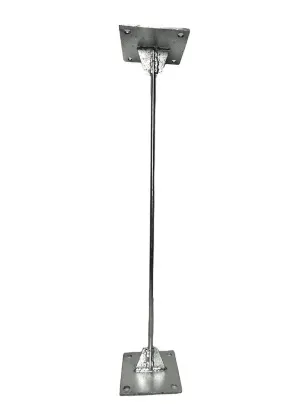loading...
- No. 9, Xingyuan South Street, Dongwaihuan Road, Zaoqiang County, Hengshui, Hebei, China
- admin@zjcomposites.com
- +86 15097380338
- Welcome to visit our website!
Exploring the Benefits of FRP Rectangular Tubes for Structural Applications
Understanding FRP Rectangular Tubes Applications and Benefits
Fiber Reinforced Polymer (FRP) rectangular tubes are increasingly gaining attention in various industries due to their exceptional strength-to-weight ratio, durability, and versatility. Made by integrating fiber reinforcements, typically carbon, glass, or aramid, with a polymer matrix, these tubes offer distinct advantages over traditional materials like steel and aluminum.
Unique Properties of FRP Rectangular Tubes
FRP rectangular tubes possess several unique properties that make them desirable for a wide range of applications
1. Lightweight and High Strength One of the most notable features of FRP rectangular tubes is their lightweight nature combined with high tensile strength. This characteristic allows for reduced energy consumption during transportation and installation, making them a popular choice in industries such as construction, aerospace, and automotive.
2. Corrosion Resistance Unlike metal tubes, which are susceptible to rust and corrosion, FRP rectangular tubes are non-corrosive. This aspect enhances their longevity and reduces maintenance costs, especially in harsh environments, such as chemical plants or marine applications, where traditional materials often fail.
3. Electrical Insulation FRP materials exhibit excellent electrical insulation properties. This feature makes FRP rectangular tubes ideal for applications in electrical enclosures and infrastructure, where safeguarding against electrical conductivity is crucial.
4. Thermal Stability With a high thermal resistance, FRP rectangular tubes can withstand various temperature ranges without significant deformation or loss of material properties. This quality makes them suitable for applications in extreme environments, such as industrial settings or outdoor constructions.
Applications of FRP Rectangular Tubes
The versatility of FRP rectangular tubes allows them to be used in numerous applications across different sectors
- Construction and Infrastructure In the construction industry, FRP rectangular tubes are frequently utilized in the creation of structural components, support frameworks, and bridges. Their lightweight nature simplifies handling and reduces overall structural weight, which can be critical in architectural design.
frp rectangular tube

- Transportation The automotive and aerospace sectors are increasingly adopting FRP rectangular tubes to lighten vehicle structures while maintaining safety and performance standards. This move not only improves fuel efficiency but also enhances the overall performance of vehicles.
- Marine Applications Given their resistance to corrosion and water damage, FRP rectangular tubes are commonly employed in the marine industry for constructing parts of boats, docks, and other marine infrastructure. They endure the harsh conditions of saltwater environments without structural degradation.
- Wind Energy In the renewable energy sector, FRP rectangular tubes play a vital role in constructing wind turbine components. Their strength-to-weight ratio contributes to more efficient turbine designs and supports the push for clean energy solutions.
Advantages Over Traditional Materials
While traditional materials like steel and aluminum still have their place, FRP rectangular tubes present several advantages that can tip the scale for certain applications
- Cost-Effectiveness Although the initial cost of FRP can be higher, the long-term savings associated with decreased maintenance, longevity, and energy consumption can outweigh these upfront expenses.
- Design Flexibility The manufacturing processes for FRP allow for a variety of designs and custom shapes that are often difficult or impossible to achieve with metals. This flexibility enhances creativity and innovation in engineering and design.
- Sustainability With a growing emphasis on sustainability, the lightweight properties of FRP rectangular tubes contribute to reducing carbon footprints in manufacturing and transportation. Many FRP composites are also recyclable, making them an eco-friendly choice.
Conclusion
In conclusion, FRP rectangular tubes represent a significant advancement in material science, offering unique properties that make them suitable for a multitude of applications. Their combination of lightweight, strength, corrosion resistance, and design flexibility positions them well against traditional materials. As industries continue to explore innovative solutions, FRP rectangular tubes are likely to become a staple in modern engineering practices, paving the way for more sustainable and efficient designs in the years to come.
-
GRP Structures: The Future of Lightweight, High-Performance EngineeringNewsJun.20,2025
-
FRP Water Tank: High-Performance Storage for Corrosive and Clean Water SystemsNewsJun.20,2025
-
FRP Square Tube: The New Industry Standard for Chemical and Structural ApplicationsNewsJun.20,2025
-
FRP Pultruded Profiles: The Ultimate Choice for Lightweight Structural StrengthNewsJun.20,2025
-
FRP Handrails: The Safer, Smarter, and Stronger Choice for Modern InfrastructureNewsJun.20,2025
-
FRP Grating: The Smart Solution for Durable, Lightweight Industrial FlooringNewsJun.20,2025
-
Why Choose a Galvanized Water Tank for Your Storage NeedsNewsMay.21,2025
